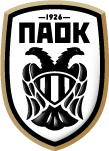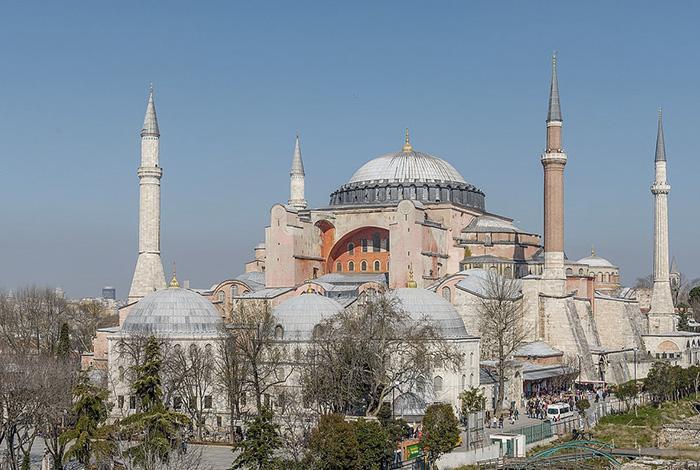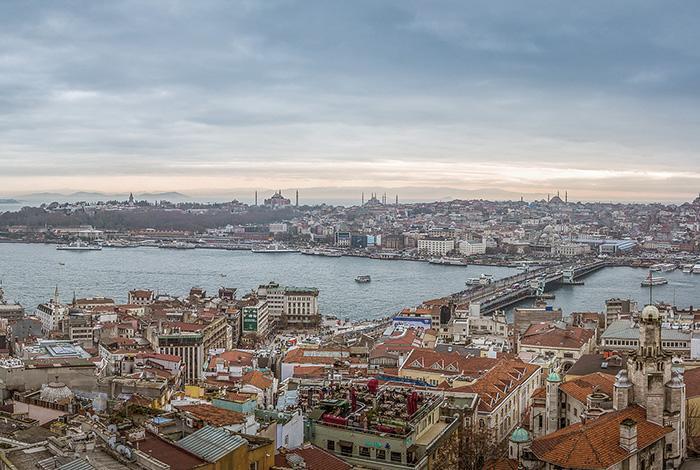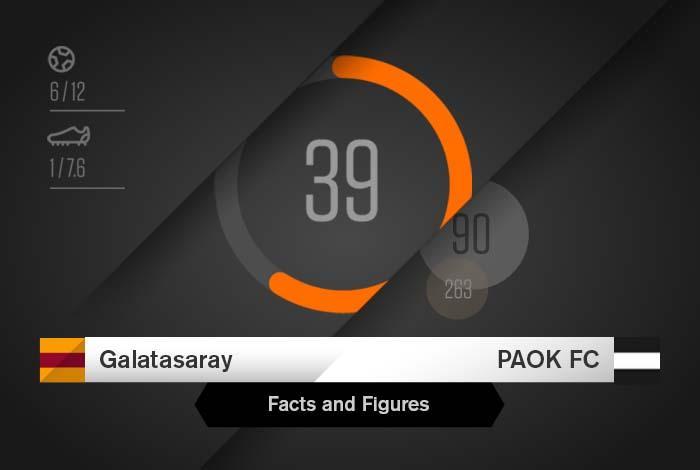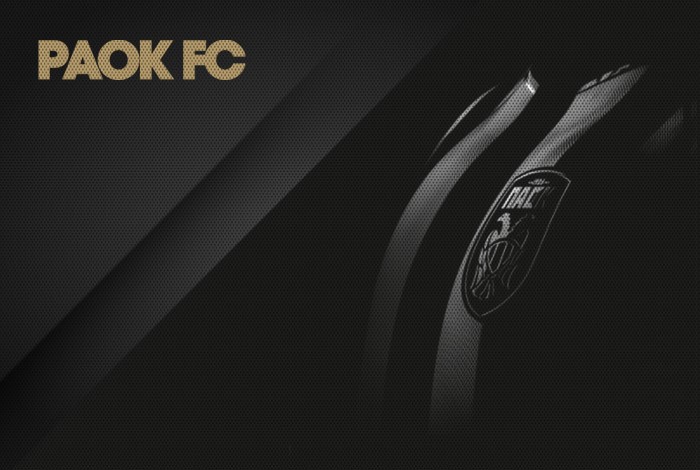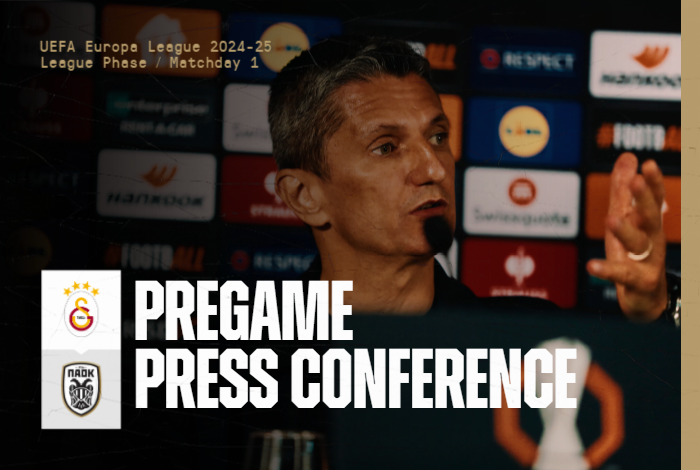A strong Galatasaray stand in PAOK’s way
PAOK start their journey in the League Phase of the Europa League in Istanbul, against the strong challenge of Galatasaray, a team that counts 23 Turkish championships, 18 Turkish Cups, six Super Cups, but also a UEFA Cup and a European Super Cup (in 2000). They also claimed the title of the “Best Football Team in the World” in January 2001.
In fact, they are one of the two teams to have won the UEFA Cup without defeat and are the only team to have won the trophy after being eliminated from the Champions League. With their victory in the 2000 UEFA Cup final against Arsenal on penalties, they became the first Turkish team to win a European trophy. They have also participated in the quarter-finals of the UEFA Cup and the Champions League. Their history and glamour are not to be underestimated…
The former player Okan Buruk is their coach from 2022. In his first season in the dugout, he led Galatasaray to 14 consecutive league wins in the 2022-23 season, which he virtually won long before the end of the season. And he even did it back to back, breaking quite a few records along the way. The title of the 2023-24 season, therefore, was won by 102 points (33 wins, three draws, two losses), eclipsing the record of 93 points held by Fenerbahce from the 1988-89 season. They also recorded 17 consecutive wins, bettering their own record, while also becoming the team with the most wins (33) in a championship season.
- The team’s history began to be written in October (the exact date is disputed) of 1905 by students of the Galatasaray High School (founded in Constantinople in 1481). The student Ali Sami Yen was the president and coach of the team until 1917. It is understood that he was given the club membership number ‘1’.
- They competed in the Turkish league for the first time in 1959 and since then they have never been relegated.
- Since there were no other Turkish teams in 1905, Galatasaray joined the Istanbul League consisting of English and Greek teams in the 1905–1906 season. With the first championship won in 1908-1909, it essentially heralded the beginning of the history of Turkish football.
- Galatasaray is a neighborhood in Karaköy in the Beyoğlu district of Istanbul, located on the northern shore of the Horned Gulf. Saray means «palace» in Turkish. Galatasaray is obviously a compound word. Fans refer to the club either by its full name, or by its nickname Cim-Bom(-Bom).
- When Galatasaray was founded, no Turkish team had its own home base and all matches in Istanbul were played at Papazın Çayırı, where Fenerbahçe’s Sukru Saratsoglu Stadium is now located. In 1921, the city’s first proper football stadium was built, the Taksim Stadium, which was used as a home ground for all of Istanbul’s teams. When Taksim was demolished in 1940, Galatasaray decided to build a large, modern stadium.
- Due to the Second World War it took more than 20 years to build the stadium. On 20 December 1964, Ali Sami Yen opened in the city center with a capacity of over 35,000. After 2002, when the Atatürk Olympic Stadium was built for the Istanbul Olympics, Galatasaray played their European matches there. There, in Ataturk, the attendance record in Turkish stadiums was broken, in the Galatasaray-Olympiacos match, which was held in front of 79,414 spectators.
- Although smaller and older, Ali Sami Yen has historical significance and great sentimental value for Galatasaray fans. It was demolished, however, in 2011 as the team moved to the newly built Rams Park.
- The Galatasaray shirt has been worn by, among others, Giorgi Hadji, Claudio Taffarel, Mario Jardel, Hakan Sukur (249 goals, the most in the history of the Turkish league), Fatih Terim (captain and later coach of the team and winner of the UEFA Cup).
- Galatasaray holds the longest consecutive home winning streak (24 games in a row from May 13 to December 8, 2002).
- The trinity of Istanbul clubs (Besiktas, Fenerbahce and Galatasaray) have a centuries-old rivalry. The Galatasaray-Fenerbahce match is Istanbul’s main derby and the most important rivalry in Turkish football.
- Initially the team colors were red and white (the colors of the Turkish flag) and then they were changed to yellow and black. After a heavy 0–5 defeat by Baltalimani in a friendly match, however, the yellow and black were abandoned. On 06.12.1908, for a match against the football team of the Royal Navy cruiser HMS Barham, they adopted the red and yellow finally, as … inspiration from the roses offered by Gul Baba to Sultan Bayezid II.
- On 02.09.1999, PAOK and Galatasaray played a friendly charity match at the Toumba Stadium (0-2), to support the earthquake victims of Turkey. The reason was the deadly 7.8 Richter earthquake that hit Turkey with a tragic toll of 15,000 dead and 400,000 made homeless.
The City of cities
A monument and memory together, on seas that gave birth to untold wealth and filled with blood. The one who finally crushed every lover who lusted after her and besieged her. The City. Vasilevusa, Constantinople, Istanbul is a metropolis of 16,000,000 souls. Eternally multicultural, long-suffering, cosmopolitan, seductively beautiful, intoxicatingly exhausting, it is a stunning city. For us the emotional load is heavy, written in our DNA. It’s aura, glamour, wealth and the poverty all together, a myth beyond measure, which is true that no matter what is said about it, it will never be enough.
Built on the site of the ancient Greek city of Byzantium (667 BC), Istanbul is Turkey’s largest city, its largest port, and the country’s economic, cultural and historical center. Its historical and commercial center is on the European side, while about a third of the population lives on the Asian side of Eurasia. It is obviously one of the largest cities in the world, being the largest settlement in Europe and the Middle East. The City straddles both sides of the Horned Gulf, at the southern entrance to the Bosphorus, which connects the Black Sea with the Sea of Marmara and is the only city in the world located on two continents. It has been, in its long history, the capital of four successive empires and is now divided into three main zones that include old Istanbul (Eminönü and Fatih), the Beyoğlu area with the district of Galatas and the tower of the same name, as well as Skoutari (ancient Chrysopolis, Usküdar) along with other suburbs that they are on the opposite Asian side of the Bosphorus.
- Agia Sophia. A historic place of worship, an architectural marvel, eternal and a beauty that is unsurpassed, Agia Sophia has been standing proudly since 537 AD. Constantine the Great began building it in 324 AD. In 532 it was completely destroyed at the Stasis of Nica and in 532 it was rebuilt by Isidoros and Anthemius. The doors were opened by Justinian in 537. From then until 1453 it was the grandest Christian temple. After the fall of the City in 1453, it became an Islamic mosque, later a museum by Kemal Atatürk and unfortunately from 2020, by the decision of Turkish President Erdogan, it functions again as a mosque. During Muslim prayer times, visitors are not allowed. UNESCO’s efforts to save the temple’s unique mosaics continue to this day.
- The historical areas of the city, with important monuments, belong to the UNESCO World Heritage List since 1985. Some of the most important attractions of the city are Agia Sophia, the Seven Towers, the Byzantine Walls, the temple and the source of the Life-giving Spring, the Patriarchate and the Lantern, Top Kapi, the Suleiman Mosque, Be Jami (Sultan’s Mosque Ahmed).
- Lygos, Byzantium, Augusta Antonini, New Rome, Constantinople, Vasilevousa, Seat of the Throne, City of Eudaimonia, City, Istanbul (in Pauline). These are just some of the names it has been given over the centuries.
- Beyond. The Beyoğlu of the Turks is crossed by the Great Street, the Grande Rue de Péra of the Europeans, the Independence Avenue of the Turks (İstiklâl Caddesi). The street starts from the historical Taksim Square and reaches the other historical district of Istanbul, Galata. Istiklal is the commercial heart of Istanbul, with its magnificent buildings and distinctive red tram.
- Untold treasures – those left over from the mighty Ottoman Empire – decorate the Topkapi Palace, residence of the respective sultans. Its gardens are enchanting, but perhaps the show is ultimately stolen by the Harem, where the sultan’s mother, wives, concubines, children and maids lived. Inside Topkapi stands the church of Agia Irini, the only one that did not become a mosque during the Ottoman Empire.
- An important Greek quarter of the city, Fanari (Fener), hosts the Orthodox Patriarchate, the church of Agios Georgios, the Greek Orthodox Lyceum. Next to it, the Balat district is full of life and colour.
- The Blue Mosque is one of the most impressive sights-mosques in Istanbul and is located in Sultanahmet Square.
- Next to the Galata Bridge the boats are waiting for a ride on the Bosphorus, at the «borders of the world», with Asia on one side, Europe on the other and all the magic of the ultimate landmark, Agia Sophia, receding on the horizon . The area of Galata, young and full of life, has boutique hotels, romantic cafes, bars and restaurants.
- Perhaps the most luxurious hammam in the city is the Kagialoglou baths built in 1741. It also has a bar on the roof.
- One of the most famous photos of the city is clearly the Galata Tower, which also offers a wonderful view.
- Bazaars and covered markets are a separate chapter in themselves. The Grand Bazaar and the Spice Bazaar are among the oldest in the world, with around 4,000 shops! They don’t have their old aura, but you can buy everything and anything.
- The Royal Cistern was built in the 6th century under Justinian as a reservoir that provided drinking water to the city. It is decorated with 336 columns and a head of Medusa.
- Eat on the road! The city is famous for its street food and especially for the balık-ekmek fish sandwich, which is grilled on the boats, lahmacun (Turkish pizza) and ayran (yoghurt drink).
- In the Dolmabahçe Palace, the residence of the sultans at the end of the 19th century, the clock always reads 09:05. It is not obviously documented, but it is widely believed that at this time on 10.11.1938, Kemal Atatürk died.
- The city also has a modern side, with the museum of modern art dominating in its new futuristic building, in the area where the new port of Galata gave way to galleries, expensive shops, European cafes and restaurants.
- The bustling and chaotic Taksim Square is the central point, from where one can to some extent orient oneself.
- Sultanahmet Square, also on the European side, is the center of the old city of Istanbul and within walking distance of Agia Sophia, the Blue Mosque, and the Grand Bazaar.
- Kantikioi (ancient Chalcedon) is on the Asian side, more authentic, away from the hordes of tourists.
- Prigiponisia, nine small beautiful islands in the Sea of Marmara, at a distance of only 18 km, are also included in the wider boundaries of the municipality of Constantinople. from the center.
- The city attracts more than 5,000,000 tourists annually.
Rams Park
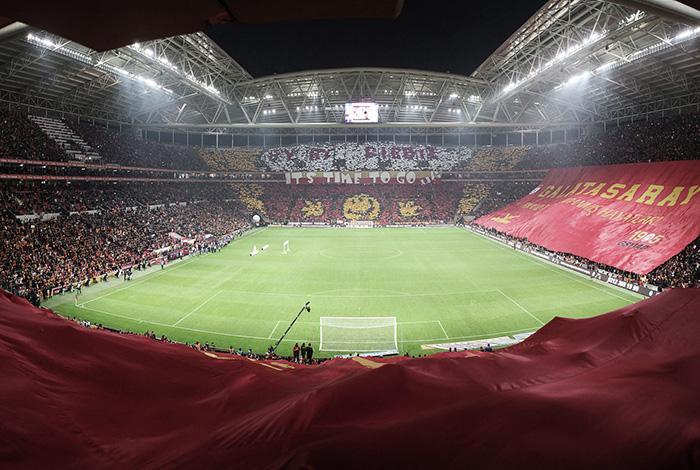
The newly built Rams Park in the Seyrantepe district of Sarıyer, on the European side of Istanbul, is the new home of Galatasaray. Also known as Ali Sami Yen Spor Kompleksi, it opened its doors on 15 January 2011. Its capacity is 53,798, making it the largest private stadium used by a club in Turkey. Some call Rams Park «Cehennem» (hell).
- In their first season at the new stadium, Galatasaray won the Turkish championship.
- The highest decibel reading (140.76 dBA) was recorded at the new Rams Park stadium on 18.03.2011, said to be «the maximum …crowd roar in a sports stadium».
- On 12.05.2024 Galatasaray reached a record number of wins (17), breaking their own record (14) in Turkish Super League history with a 3–2 win over FK Karagümrük at Rams Park.
- Rams Park was the first stadium in Turkey to meet UEFA Euro 2016 requirements during the country’s bid to host the European Championship.
- In 2011 Rams Park was one of six nominees for the Stadium Business Awards’ Venue of the Year and New Venue categories.
- There are 221 suites on the ground floor.
- Rams Park is one of the main stadiums of the Turkish national team. The highest attendance at a Turkey match is 49,532 which was a match between Turkey and Germany at Rams Park on 07.10.2011.
- The stadium attendance record (53,775) was made on 19.05.2024 in the Champions League game between Galatasaray and Bayern Munich.
- The stadium can of course be converted into a concert arena with a capacity of over 70,000 people.
- Its dimensions are 105 × 68 m.
- It cost around 128,000,000 euros to build.
